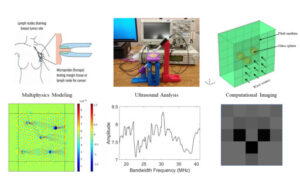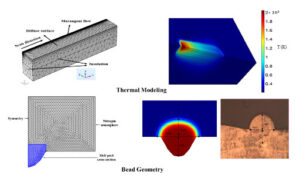Process and Technology
Defect Analysis and Fatigue Strength Prediction of As-built Ti6Al4V Parts, Produced Using Electron Beam Melting (EBM) AM Technology

In this study, the surface roughness profile on different sides of the EBM Ti-6Al-4V parts with different orientations has been analyzed. Based on this surface analysis, the fatigue strength of these parts has been calculated nondestructively using a quantitative method, Murakami’s square root of area parameter model.
Determination of mechanical anisotropy of polymer parts produced by Stereolithography

In this study, the degree of mechanical anisotropy was investigated through tensile testing of specimens built in different orientations. The mechanical and physical properties evaluated were then compared with an available data set to see how SLA performs compared to the traditional manufacturing methods.
Evaluating Amplitude Variation of Frequency Spectrum in Ultrasound Imaging by Through Transmission Method
 Ultrasound measurement is a relatively inexpensive and commonly used imaging tool in the health sector. In this study, the amplitude variation of the frequency spectrum was evaluated as a potential imaging technique through different parameters. A computational model was developed to produce through-transmission C-scan image. The model was compared with the existing experimental imaging results and modified to eliminate the limitations of the experimental results.
Ultrasound measurement is a relatively inexpensive and commonly used imaging tool in the health sector. In this study, the amplitude variation of the frequency spectrum was evaluated as a potential imaging technique through different parameters. A computational model was developed to produce through-transmission C-scan image. The model was compared with the existing experimental imaging results and modified to eliminate the limitations of the experimental results.
Computational Modeling of Laser Powder Bed Fusion Additive Manufacturing Process

This work presents a process in which a non-Gaussian laser beam model is used to model temperature profile, bead geometry and elemental evaporation in powder bed process. Results are compared against Gaussian beam model and also an experiment for Inconel 718 alloy. The model offered good prediction of temperature, bead shape and concentration of alloying elements.